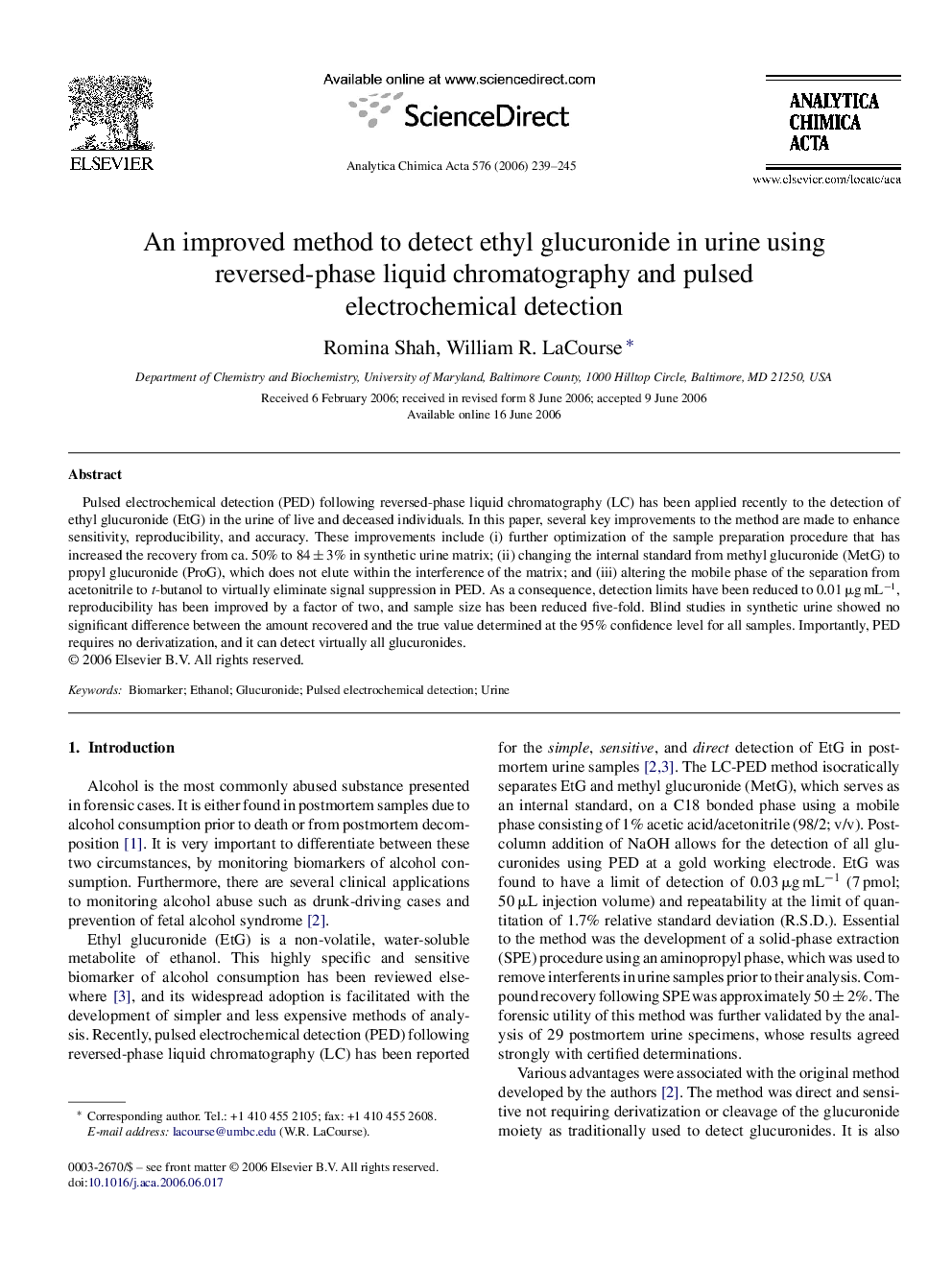| Article ID | Journal | Published Year | Pages | File Type |
|---|---|---|---|---|
| 1170363 | Analytica Chimica Acta | 2006 | 7 Pages |
Abstract
Pulsed electrochemical detection (PED) following reversed-phase liquid chromatography (LC) has been applied recently to the detection of ethyl glucuronide (EtG) in the urine of live and deceased individuals. In this paper, several key improvements to the method are made to enhance sensitivity, reproducibility, and accuracy. These improvements include (i) further optimization of the sample preparation procedure that has increased the recovery from ca. 50% to 84 ± 3% in synthetic urine matrix; (ii) changing the internal standard from methyl glucuronide (MetG) to propyl glucuronide (ProG), which does not elute within the interference of the matrix; and (iii) altering the mobile phase of the separation from acetonitrile to t-butanol to virtually eliminate signal suppression in PED. As a consequence, detection limits have been reduced to 0.01 μg mLâ1, reproducibility has been improved by a factor of two, and sample size has been reduced five-fold. Blind studies in synthetic urine showed no significant difference between the amount recovered and the true value determined at the 95% confidence level for all samples. Importantly, PED requires no derivatization, and it can detect virtually all glucuronides.
Related Topics
Physical Sciences and Engineering
Chemistry
Analytical Chemistry
Authors
Romina Shah, William R. LaCourse,
